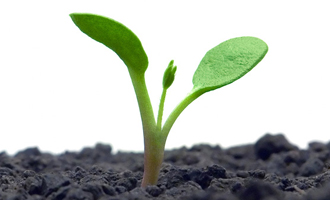By JEFF RUGG, Contributing writer
Question: When I was a kid, my mom and the neighbor ladies would gather seeds from the marigolds and other plants. They spent the afternoon doing something to them and then in the spring, they replanted them with great success. I want to do that with my daughters. What do I need to do?
Answer: Many garden plants are easy to grow from seeds, but annuals are the easiest. The plants your mom saved the seeds from are called open-pollinated varieties that come back true to form every year. Newer plant varieties may not turn out the same because they are often hybrids.
The offspring of hybrids may not look as identical to the parents as the open-pollinated varieties. Another problem is that many new varieties are double flowering, which means that the sexual parts of the flower are gone and replaced with more petals to make them look prettier, but they produce very few seeds.
Saving plants
If you know of a plant that you want to save, there are a few things to do. First, wait until the seeds are mature, and only pick healthy looking seed heads or fruit. In the fall, almost all seeds are ready to be saved if they are still on the plant.
Earlier in the season, you might want to tie a paper bag or nylon stocking over the end of the plant to collect the seeds before they fall off or blow away.
Next, clean as much chaff off the seeds as possible. This is what your mom was doing all afternoon. Chaff hides insects and their eggs. It also may be moist, which will encourage fungal disease problems or cause the seeds to rot during storage.
If you collected berries or other fruits like tomatoes or cucumbers, you will need to get the seed out of the gooey stuff (a technical term used by botanists) before letting the seeds dry out. Only save and store clean and dried seeds. Place them in a cool dry location in paper bags, not plastic.
Save seeds in bags
Plastic bags retain too much moisture, which helps fungal diseases grow. Label the bags! You will forget what seed is in what bag, and other people may be inclined to throw them away if they are not labeled.
The label needs to state the kind of seed with as much detail for the name, as you know. It needs to list the location and date they were gathered. Knowing how old the seeds are will be useful in the future. Seeds slowly grow while stored, and they will eventually die if not planted.
Some seeds can last for many years, while others should be planted next spring. Most seeds should be stored in a cool, dry location.
Proper storage
The vegetable drawer of the refrigerator is a good place for most seeds. The paper bags of seeds can be stored in airtight containers in the drawer. Another storage techniqu
File your seed packs behind A-Z dividers that keep the packs upright so the seeds don’t spill. Other seed-saving products on the website include glassine envelopes and labels.
Glassine is a very thin and smooth paper that is air- and water-resistant.
Email questions to Jeff Rugg at info@greenerview.com. To find out more about Jeff Rugg and read features by other Creators Syndicate writers and cartoonists, visit the Creators Syndicate website at www.creators.com. COPYRIGHT 2012 CREATORS.COM
Here’s a Farm and Dairy article about square foot gardening.










